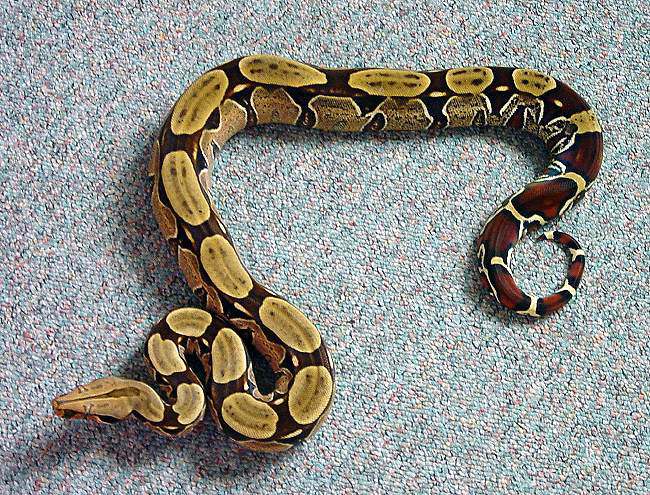

Aggregated boas were found only during the dry season. The common boa has an extensive distribution in nature and many geographic names have come to be used to refer to this subspecies, including Mexican boa, Sonoran desert boa, Yucatan boa, Central American boa, El Salvador boa, Nicaraguan boa, Panamanian boa, Honduran boa, Hog Island boa, Corn Island boa, and Colombian boa. Reproductive females were in better body condition (mass relative to body length) than nonreproductive females, indicating that a female's initial "decision" to reproduce in any given year may be driven by her body condition (storing enough energy for a long period before expending it on reproduction: "capital breeder"). The ratio of reproductive to nonreproductive females was 1:1, suggesting females do not reproduce annually in this population.

Reproductive activity was seasonal and associated, with vitellogenesis and spermatogenesis occurring during the dry season (April to September). Here, the saddles break up into half rings of a pale cream color in vivid contrast with the red. Litter size averaged 25.05 and increased significantly with maternal body size. Adult females were 14% longer and 51% more massive than adult males. the federally threatened and endangered species from California, Texas.

Snakes were examined by ultrasound scanning between 19. (4) How many businesses breed one or more of the nine constrictor snake species. We provide data on sexual dimorphism, reproductive biology, and mating aggregations of the Argentine Boa Constrictor (Boa constrictor occidentalis), a poorly known, threatened species. Colombian rainbow boas are a fascinating species distinguished by their stunning iridescence and friendly demeanor.


 0 kommentar(er)
0 kommentar(er)
